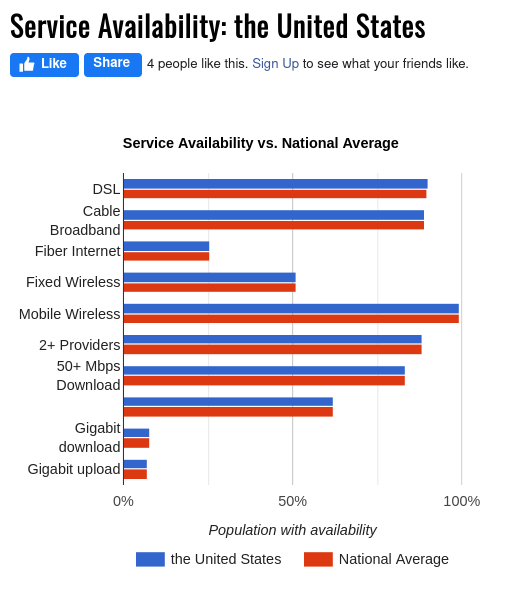
High speed internet access in the US is terrible. Spacex’s Starlink could drastically change that.
In pandemic times, quality internet access is more important now than ever. More and more people are now encouraged to work from home if possible. Children and students are taking part in distance learning. With less entertainment options outside, we are all streaming now more than ever. All of this stuff requires a good internet connection, and that’s where the problem lies.
Broadband internet access in America is terrible. On the surface, the broadband situation looks ok. Over 99% of Americans technically have access to broadband. But when you look a little closer things are not as rosey. These stats are including mobile, so cell phones and hotspots basically. A couple of problems come with that. Things like spotty coverage maps, and expensive data plans. Those that together make mobile primarily an alternate access method, that will probably be used mainly for emergencies and as last resorts.

If we look at the graph, we see the internet access method that’s the most accessible is DSL, at 89%. Let’s be honest here, it’s 2020. DSL should not even be in the conversation anymore. Yes, DSL can theoretically be fast, with a max Download rate of 100 Mbps, but in practice you will in many cases get somewhere between 6 and 25 Mbps, depending on how far you are from the IPS. Honestly, It’s so slow that I wouldn’t even consider it broadband. The next access method down the line is Cable, at 88%. This is a very solid option with relatively high speeds. The thing is that while 88% is great, we are still leaving out 12% of the population. On the surface that doesn’t look too bad, but its worst then is sounds. Right now, the US population is around 320 million, so 12% works out to be about 38.4 million people. So over 38 million people in the US just don’t have the option of cable internet. That isn’t an ignorable number of people. These people are at a serious disadvantage in this day and age. Spacex’s Starlink could drastically change that.
So what exactly is Starlink ? It’s Spacex’s initiative to bring internet access to those around the world who beforehand had no other options. The way that Spacex has decided to tackle this enormous challenge is by using a butt-ton of tiny, low-altitude satellites. The good folks over at Make Use Of go in much more depth on all things Starlink.
They have been working on it for a while now, but back in August 2020 they started their public beta testing in select areas of the US and Canada, where they are allowing your average citizen to sign up for their service. I wasn’t super excited about it at first, until the initial results started coming in. People are reporting easy setup experiences, and more importantly, fast and consistent internet speeds and connections. We don’t have official numbers as to what people are seeing (Starlink users are required to sign an NDA), but with the Internet being the Internet, some have spilled the juicy details. Looks like seeing results in the ballpark of around 40 Mbps upload / 10 Mbps download on average will be typical, and latency of around 40 ms. Also, there are no data limits and no data throttling. On the affordability note, The equipment cost $499, and the service cost $99 per month. This is so incredible when you compare it to prior satellite options. Right now, there are only two options for residential satellite internet in the US, Viasat and HughesNet. Viasat, arguably the better deal of the two, is $150 per month for 100 Mbps down / 3 Mbps up, and data throttling after 150 Gbs. The terrible upload speeds and data throttling are deal breakers. Starlink is just looking like a superior option compared to existing satellite internet. Honestly, forget satellites, this is just flat out great in comparison to most modern internet options. Sure, it’s not in the same league as Fiber, but apparently only 12% of the population has access to Fiber, so that’s not even in the conversation.
So is Starlink going to be the default Internet access option of the future? Well, as with most things, that depends. Remember, even though Starlink is something that some can order right now, they are still really in the early testing days. We don’t know how the situation will look when their user base grows. Maybe the prices that we are seeing right now are just promotional and will skyrocket later. Maybe the real world results only look so amazing right now because their networks aren’t too crowded, but once the word gets out things will crawl to a halt. Probably not, but who knows. One thing that we do know right now is that right now, millions of people who didn’t have a good internet option will soon have a chance to really participate in the digital world.
